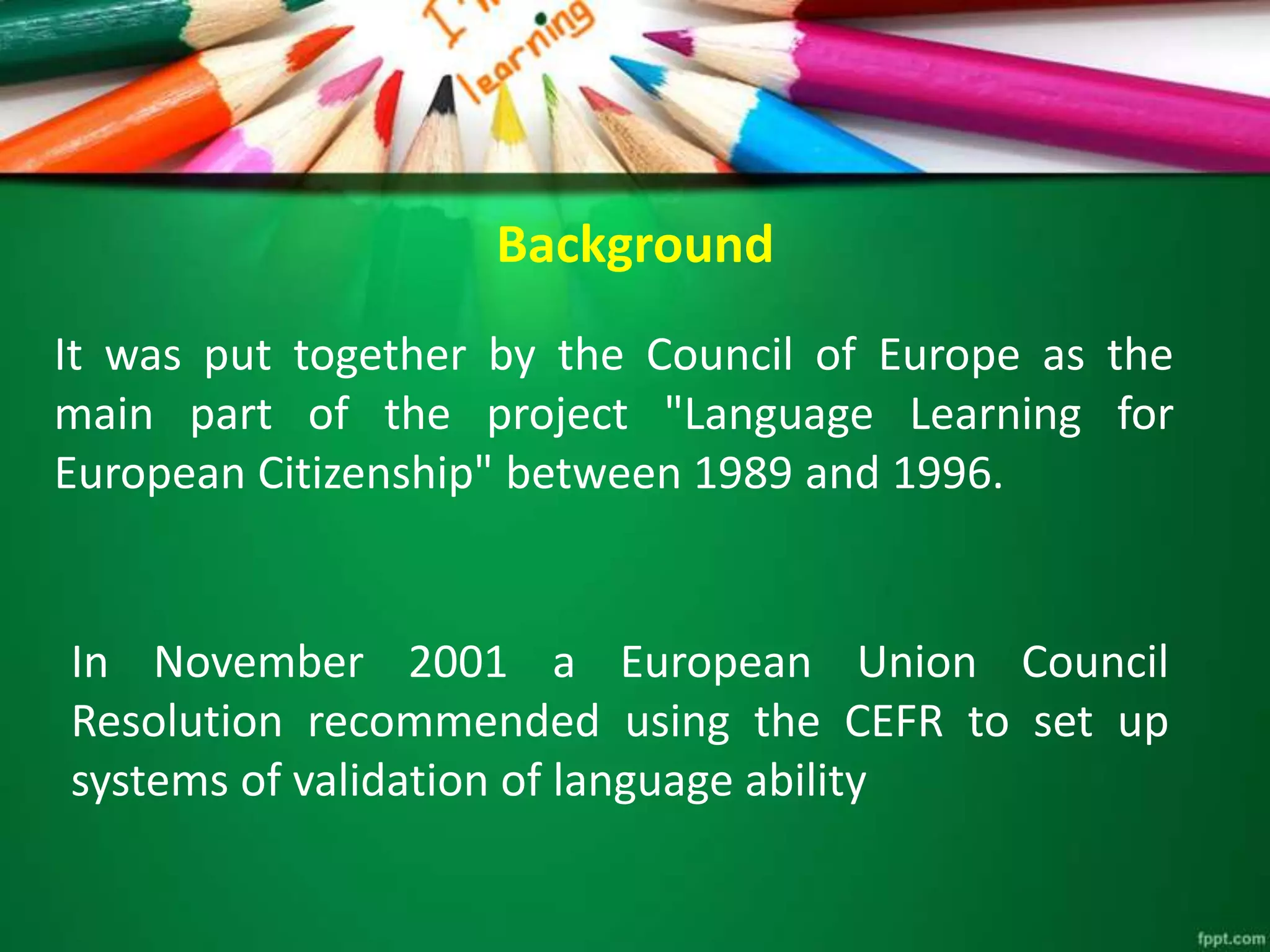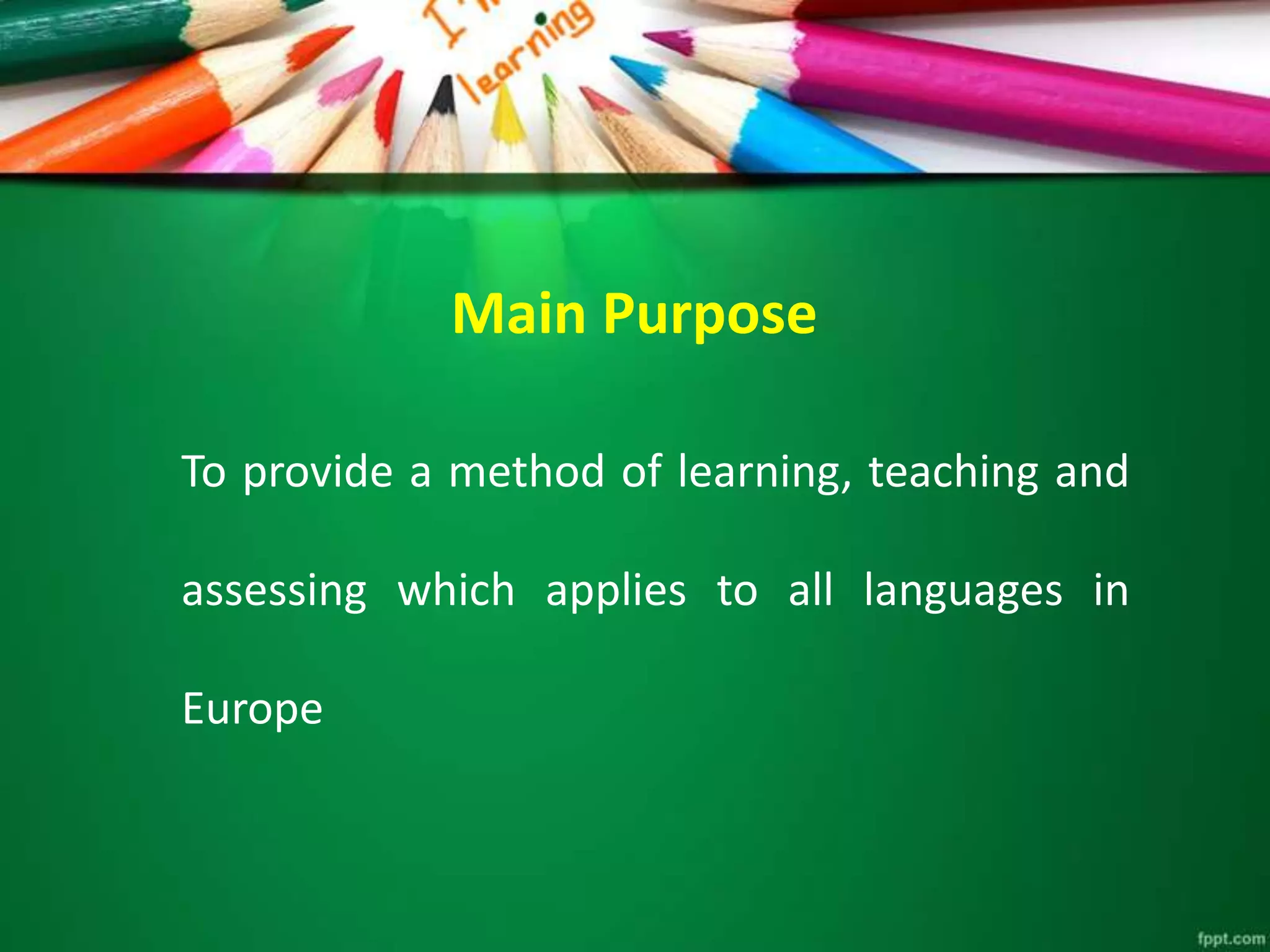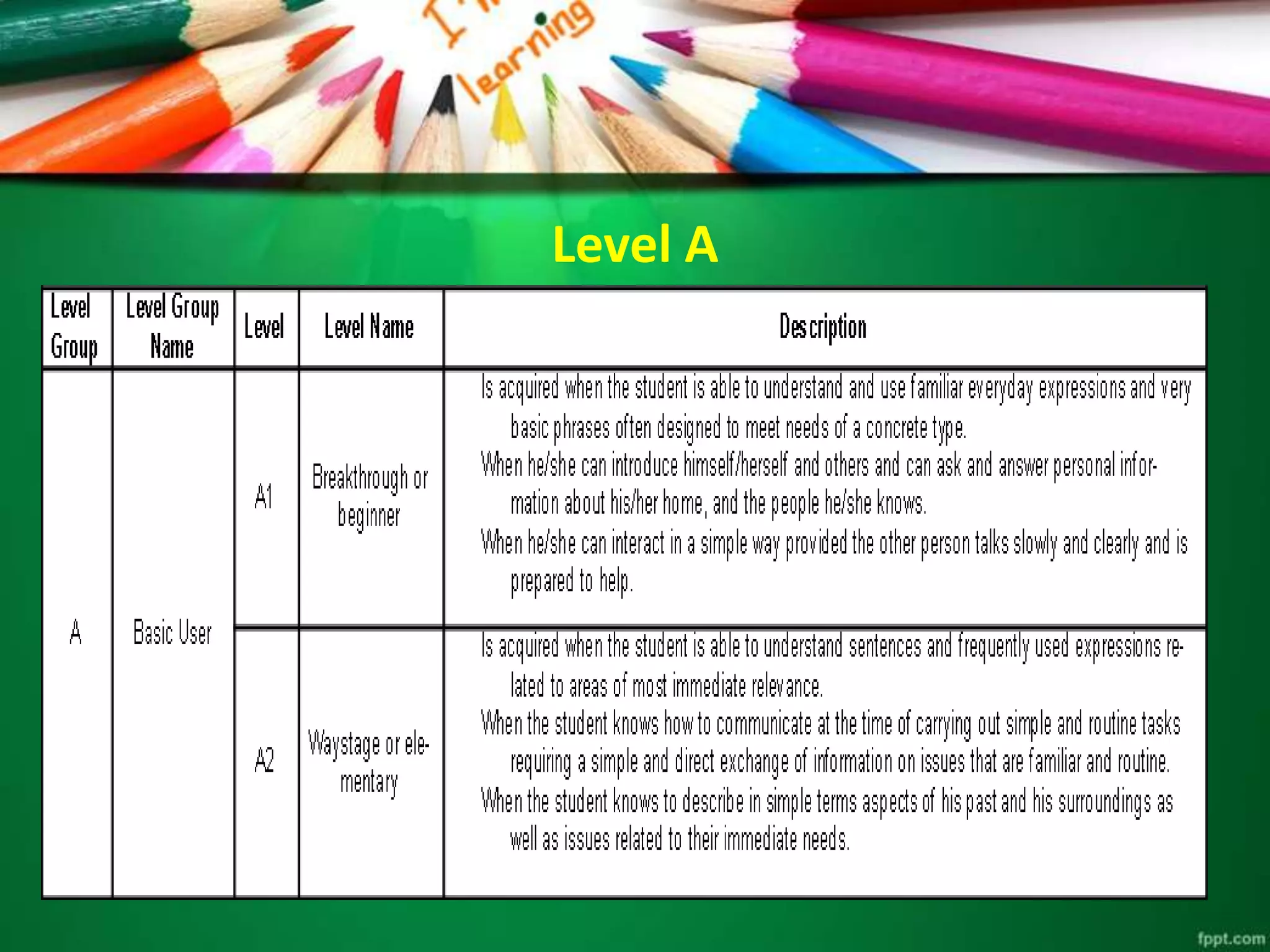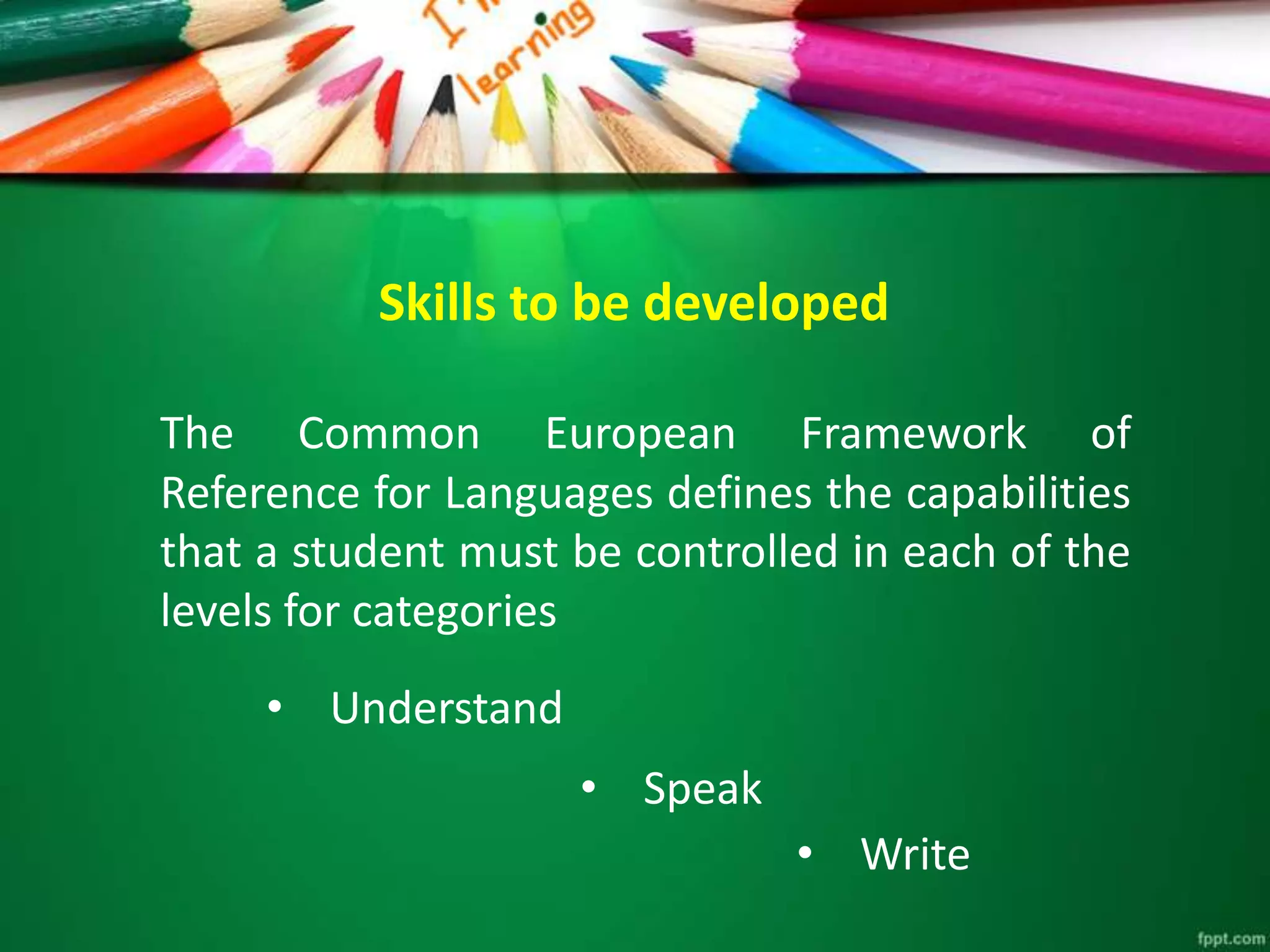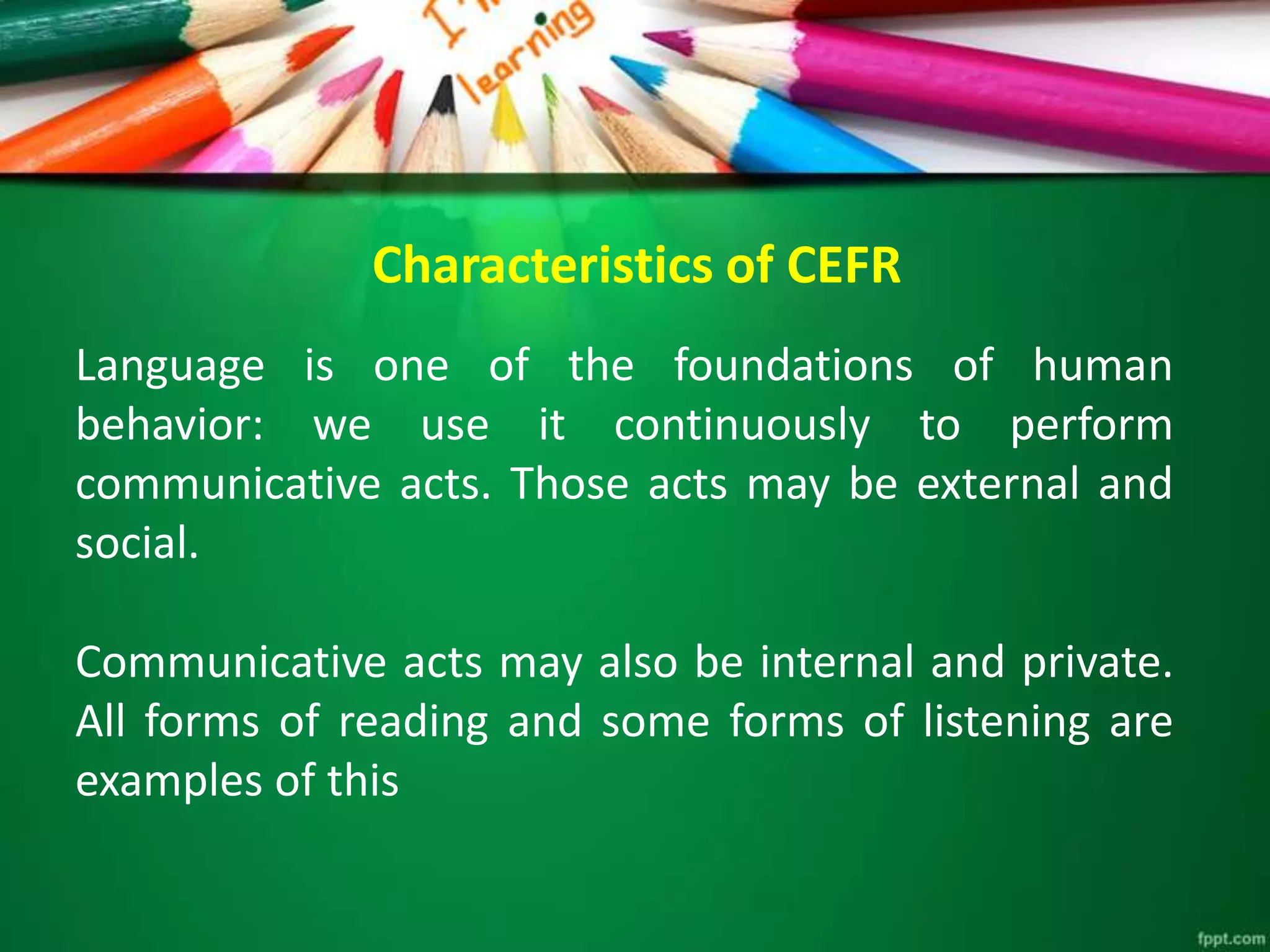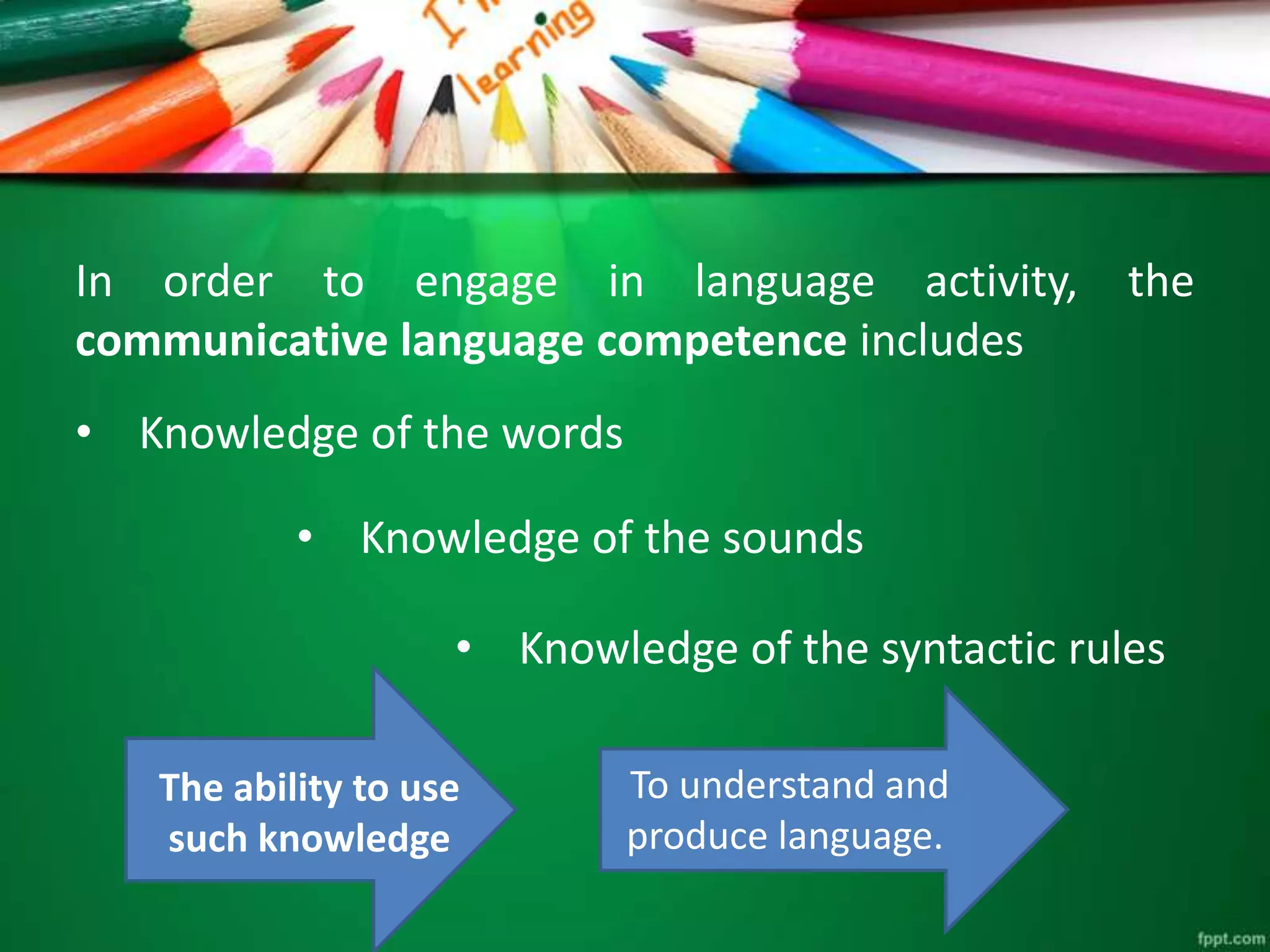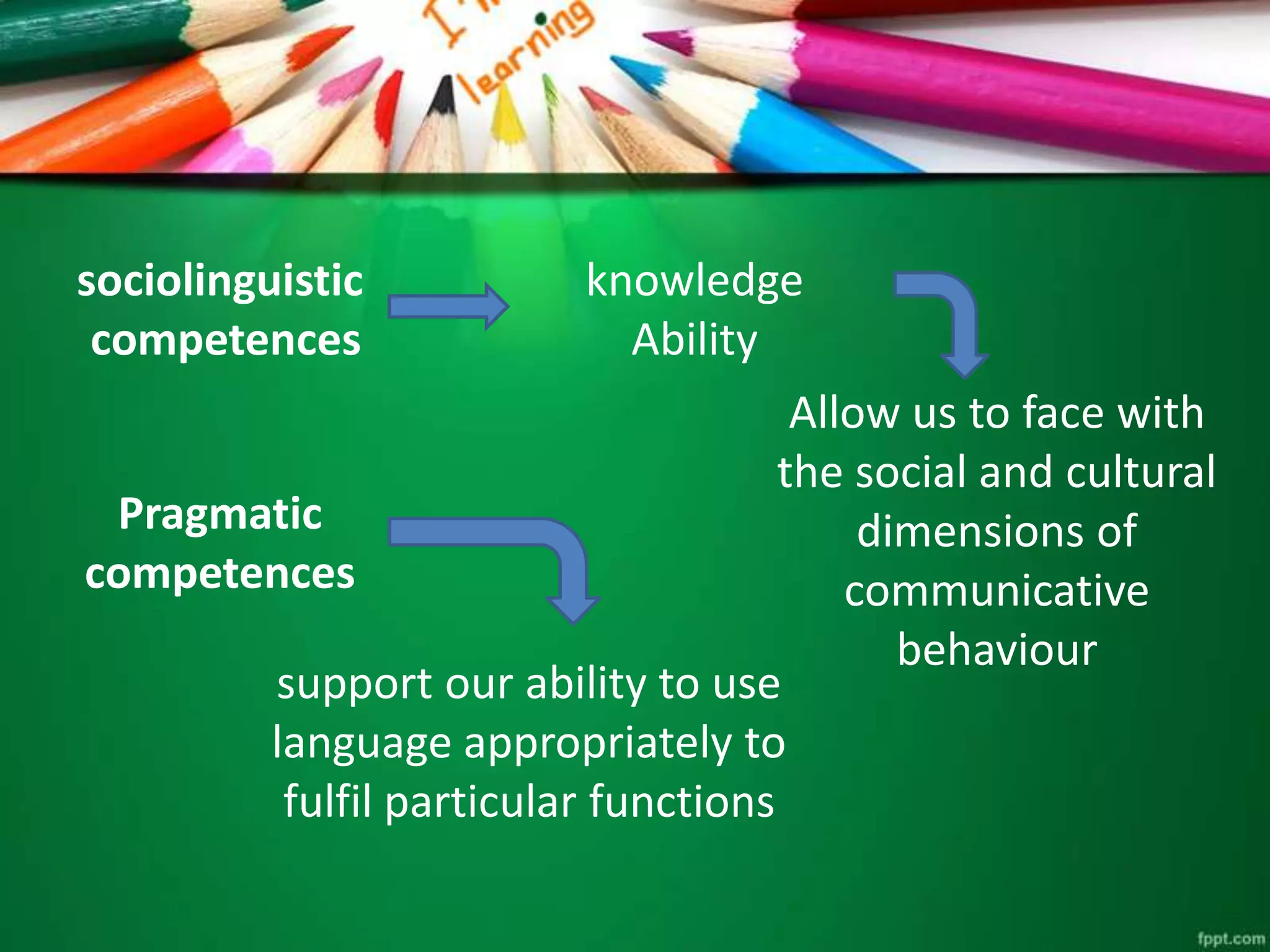The Common European Framework of Reference for Languages (CEFR) was developed by the Council of Europe to improve language learning and teaching across Europe. It categorizes language proficiency into three levels (A, B, and C) and defines specific skills for reading, listening, speaking, and writing. The CEFR promotes an action-oriented approach, emphasizing the social and contextual aspects of language use.


